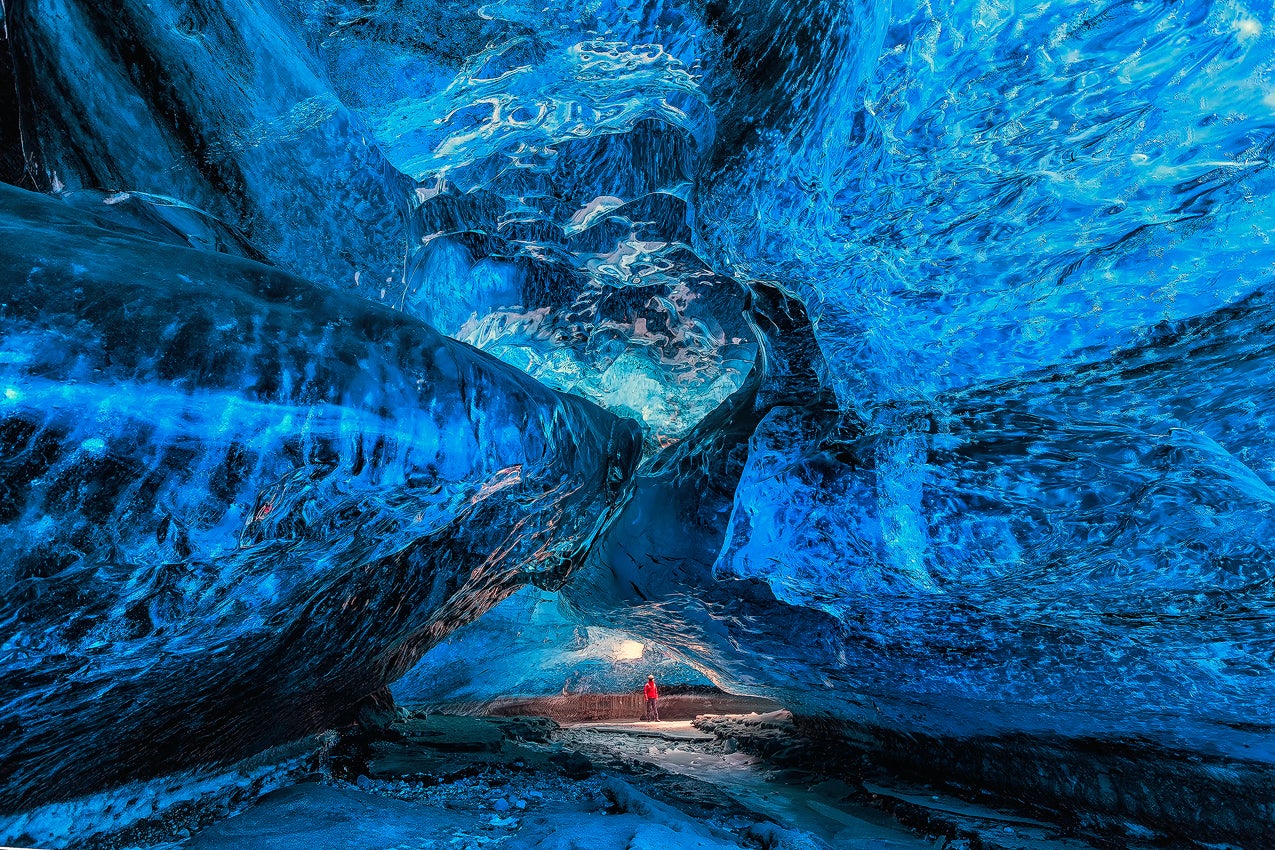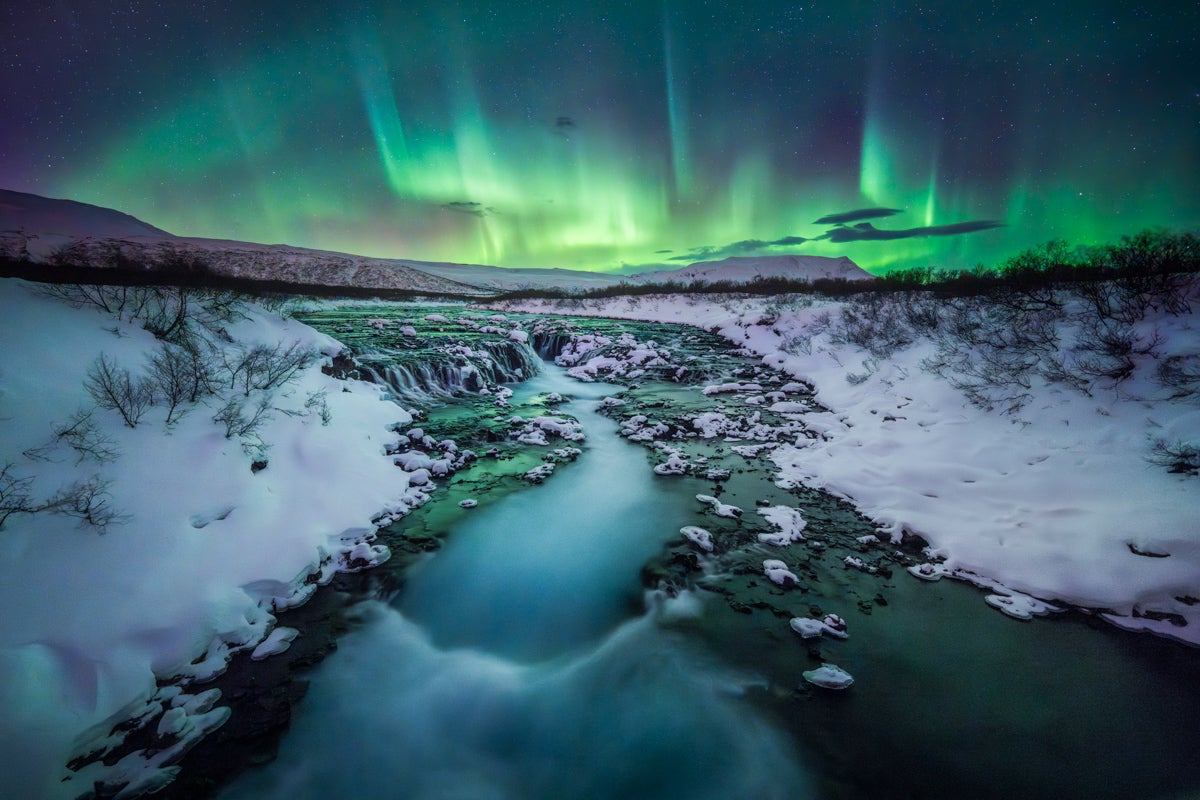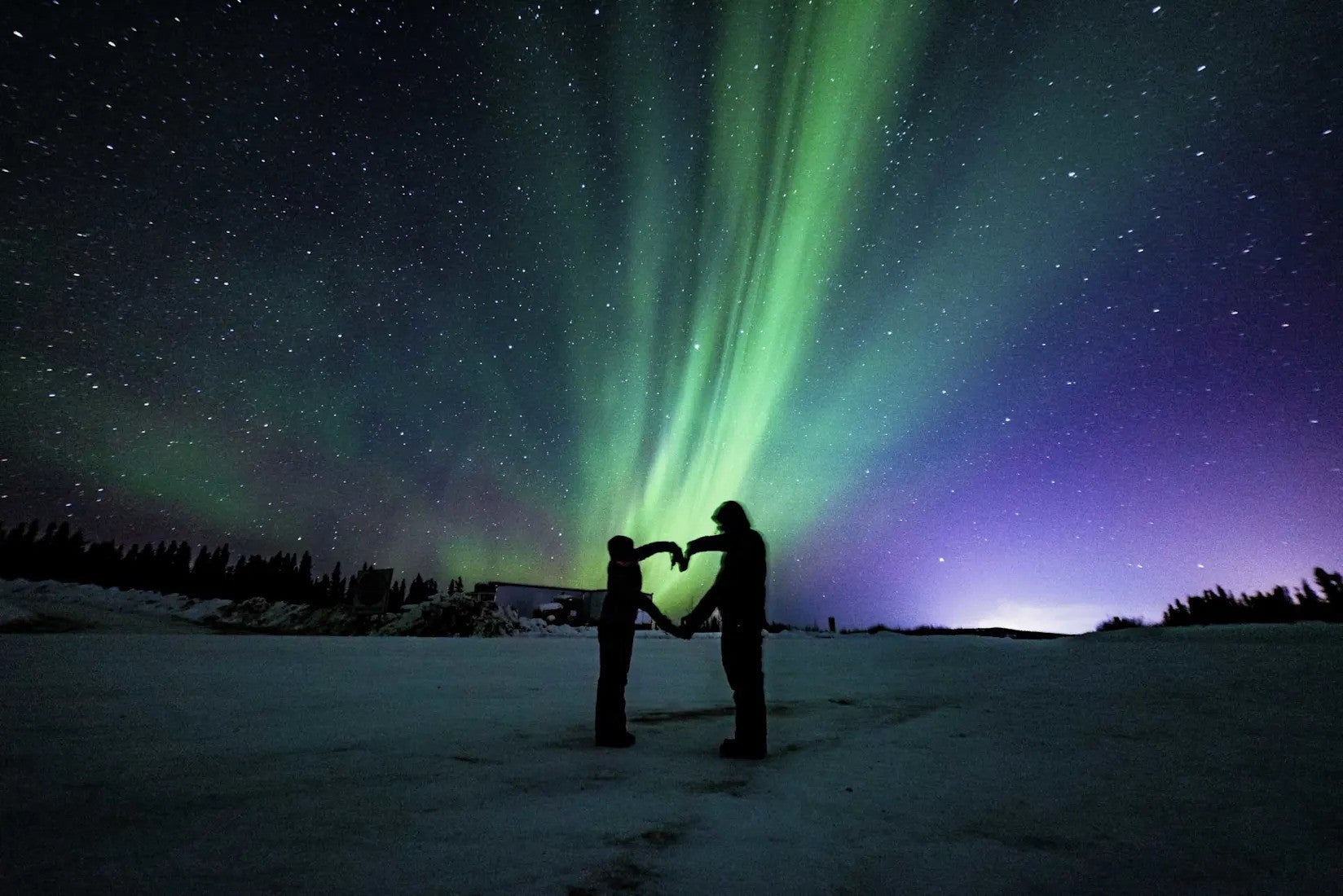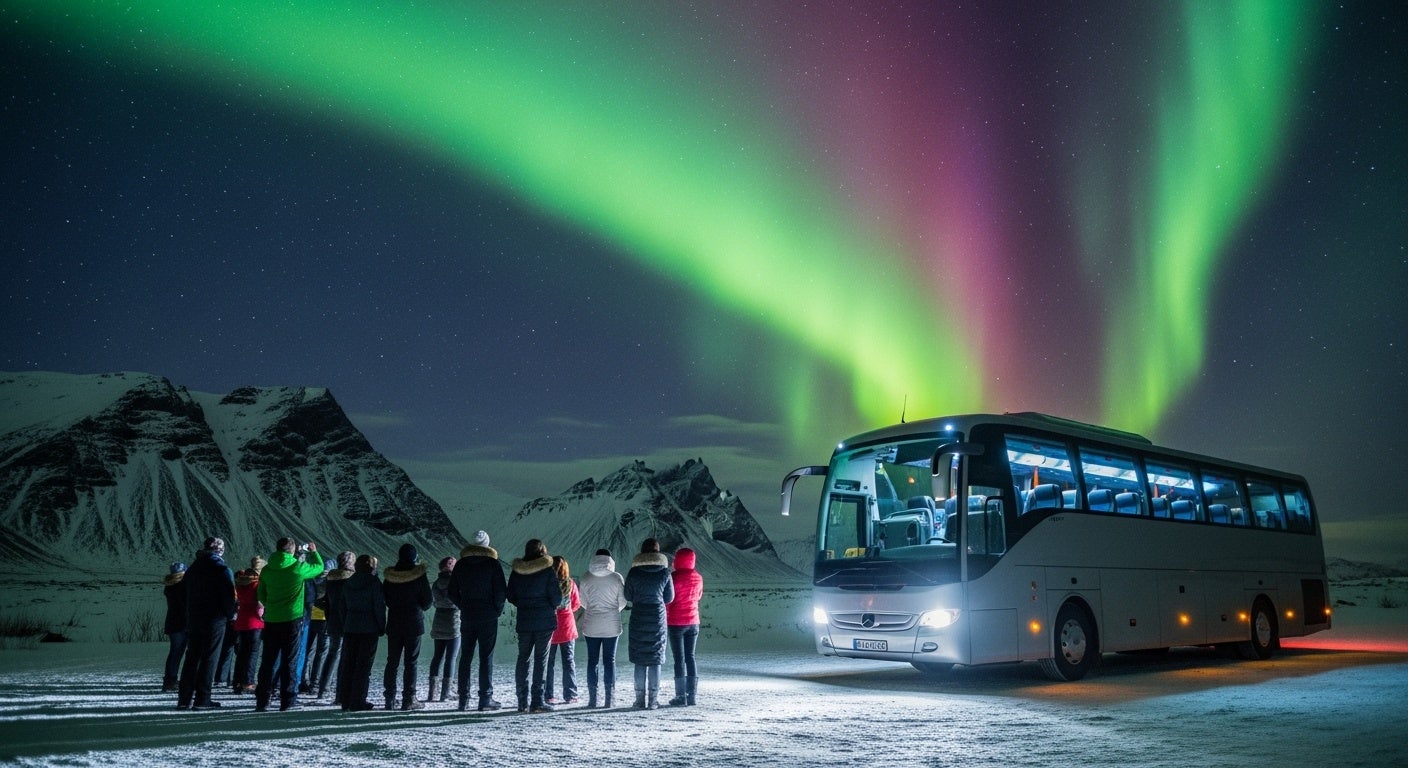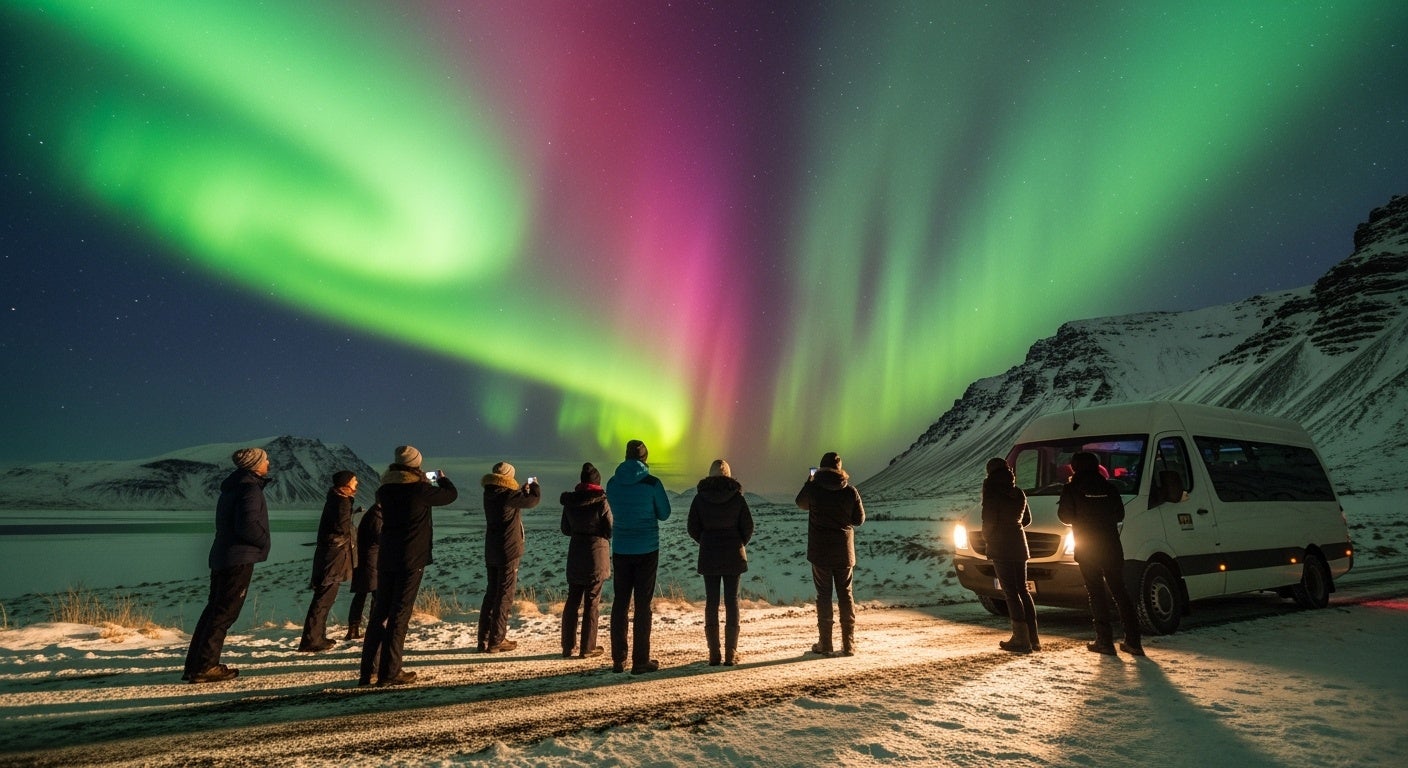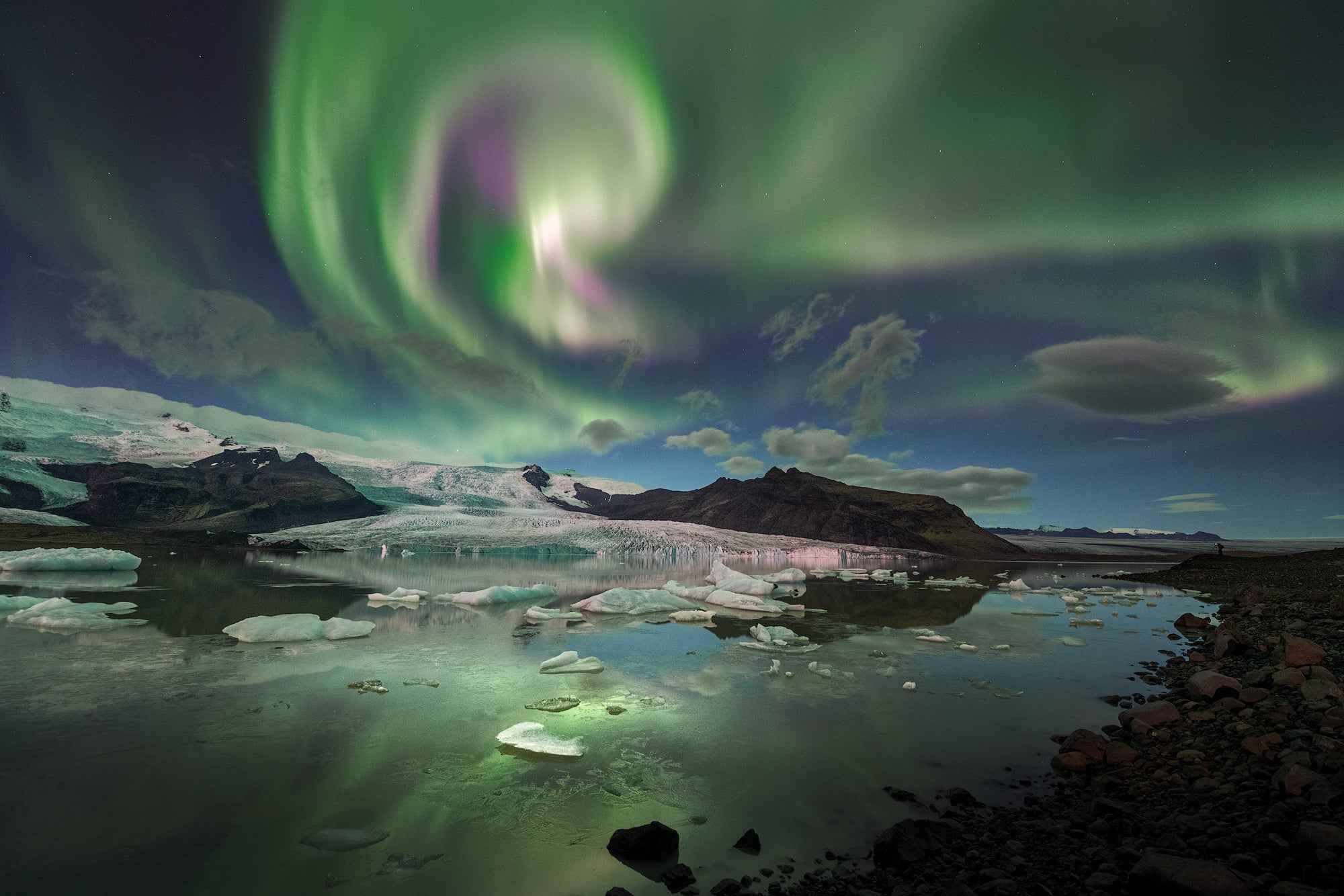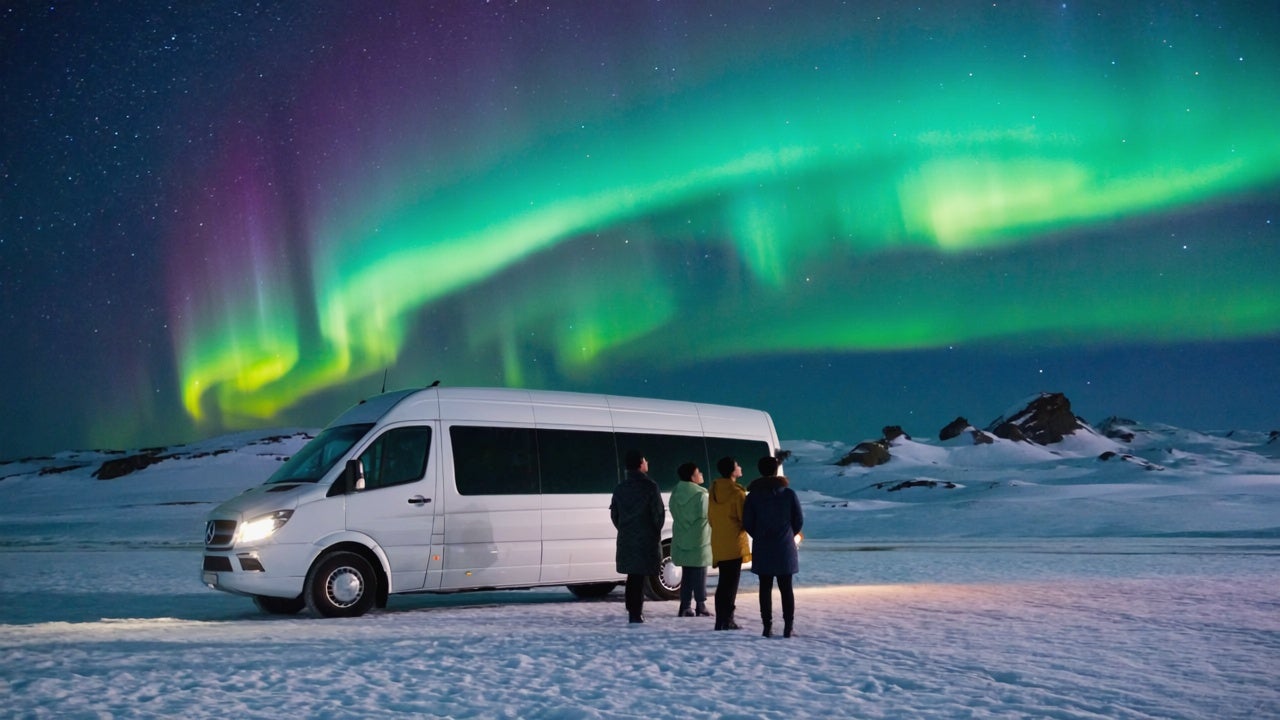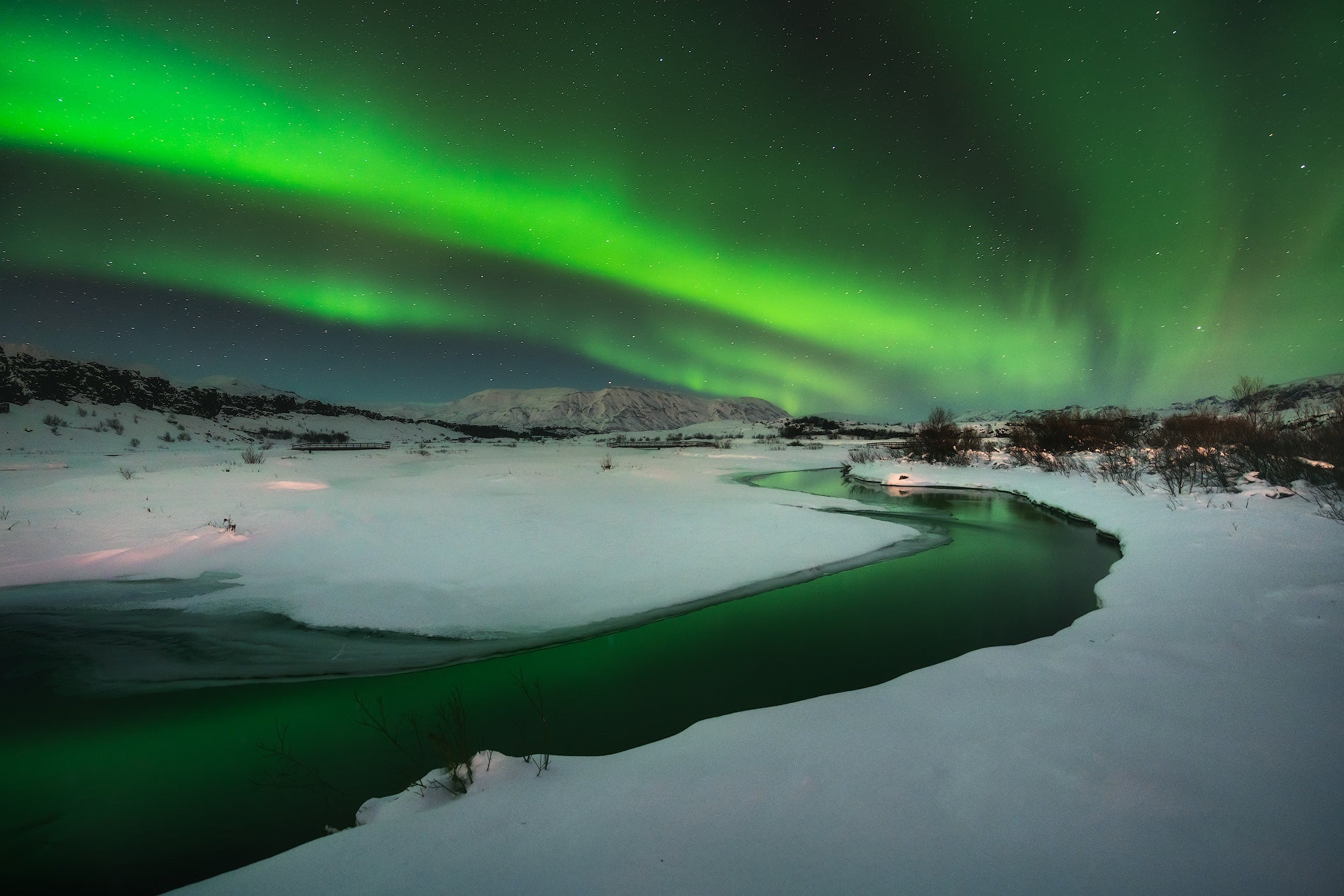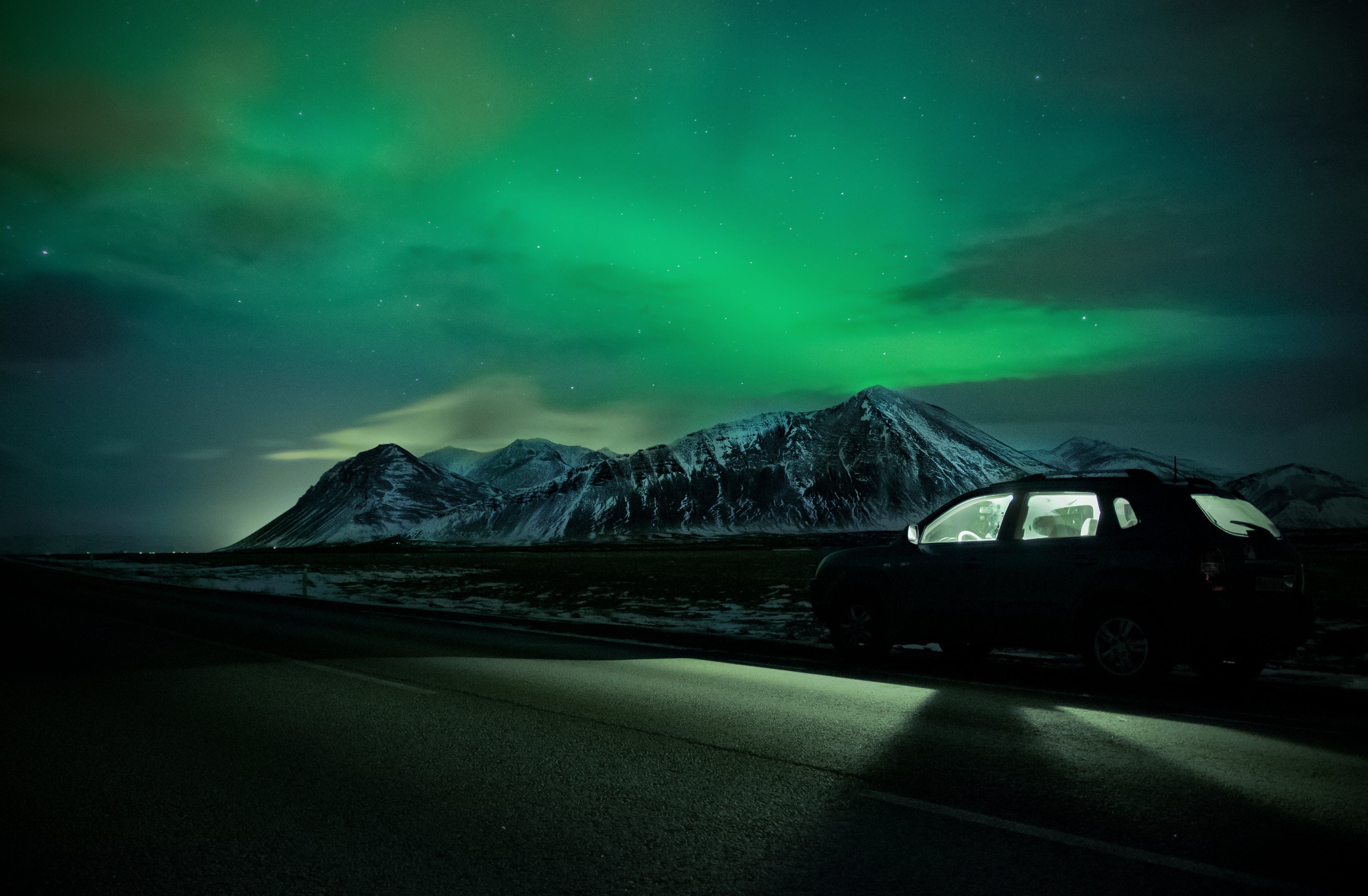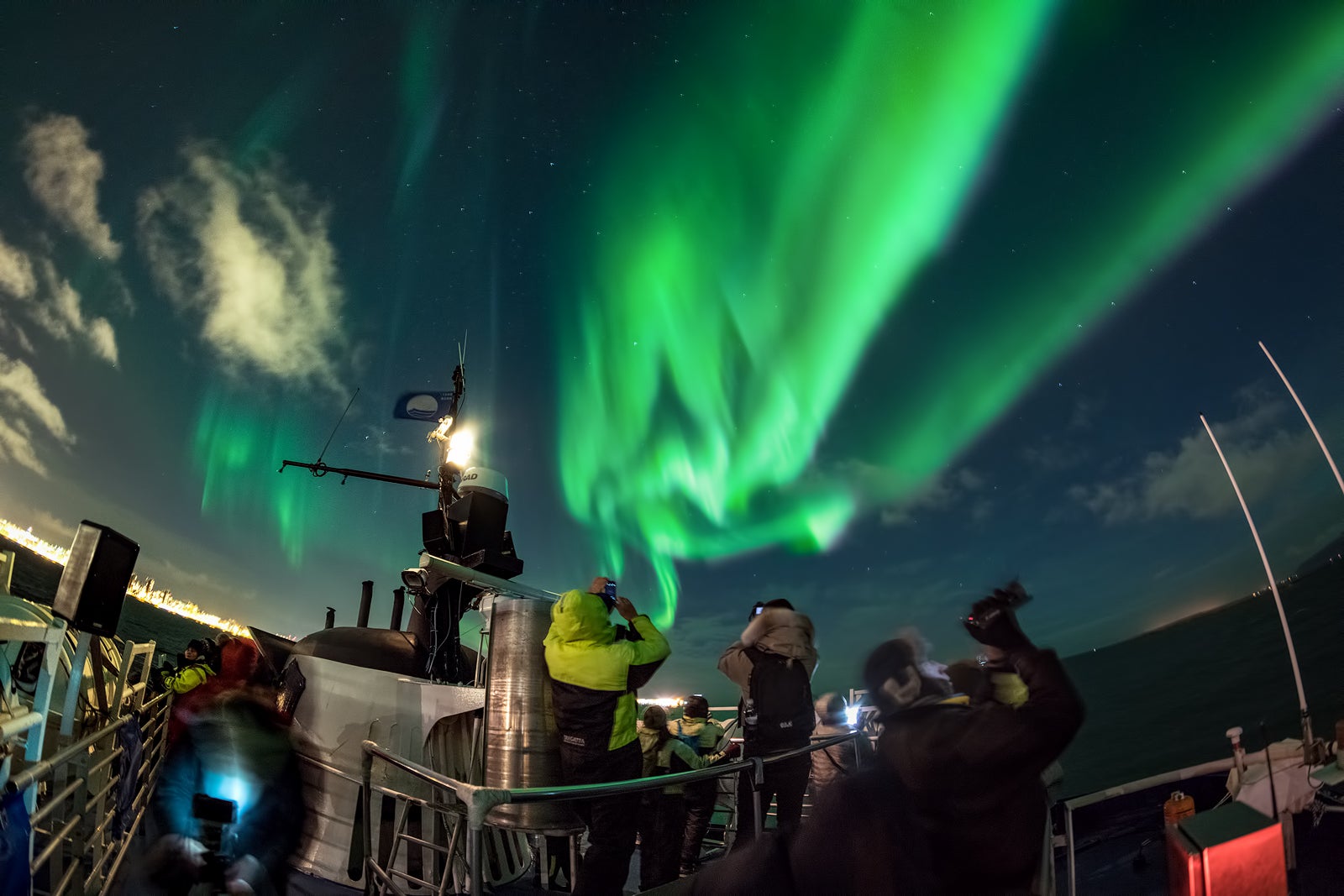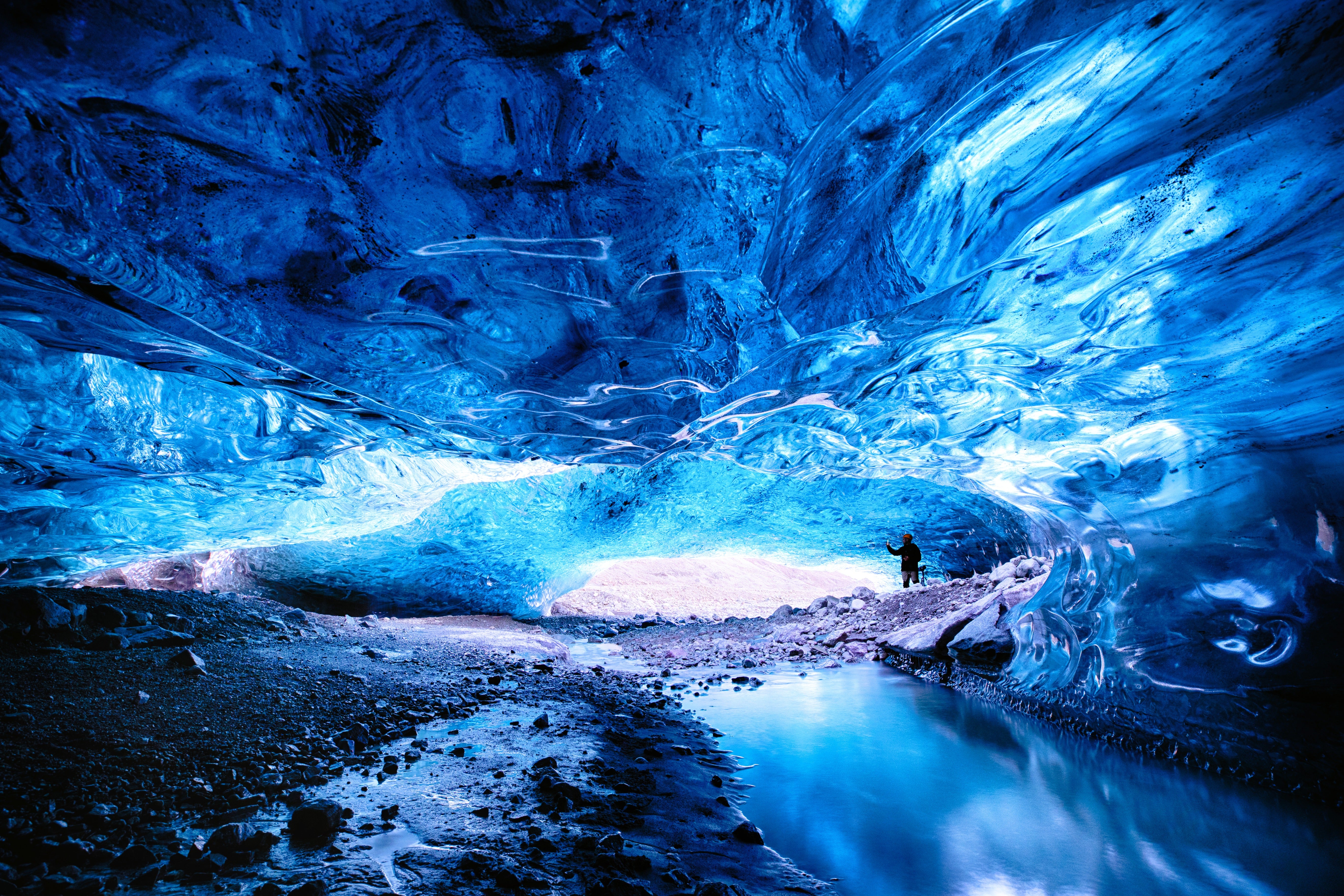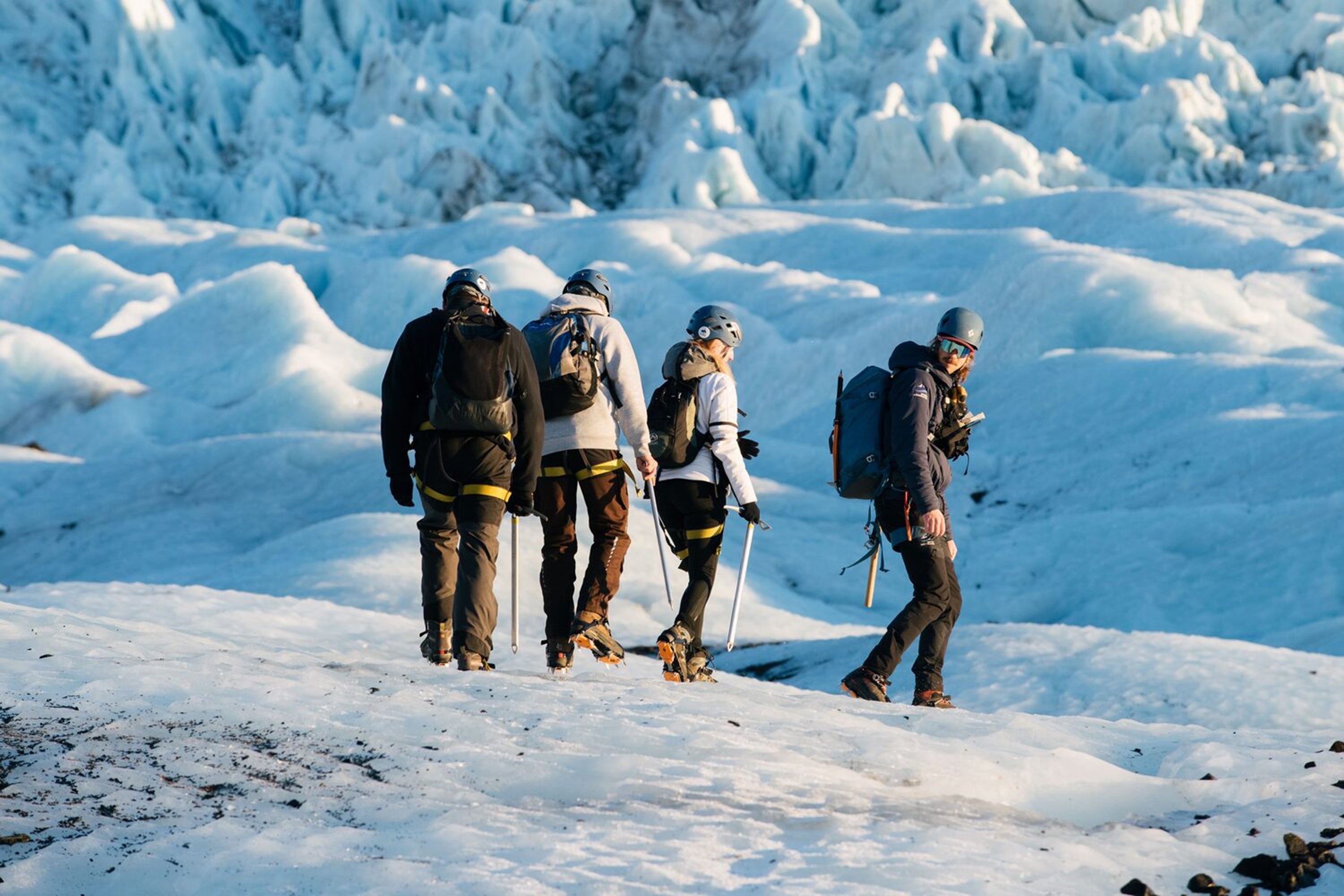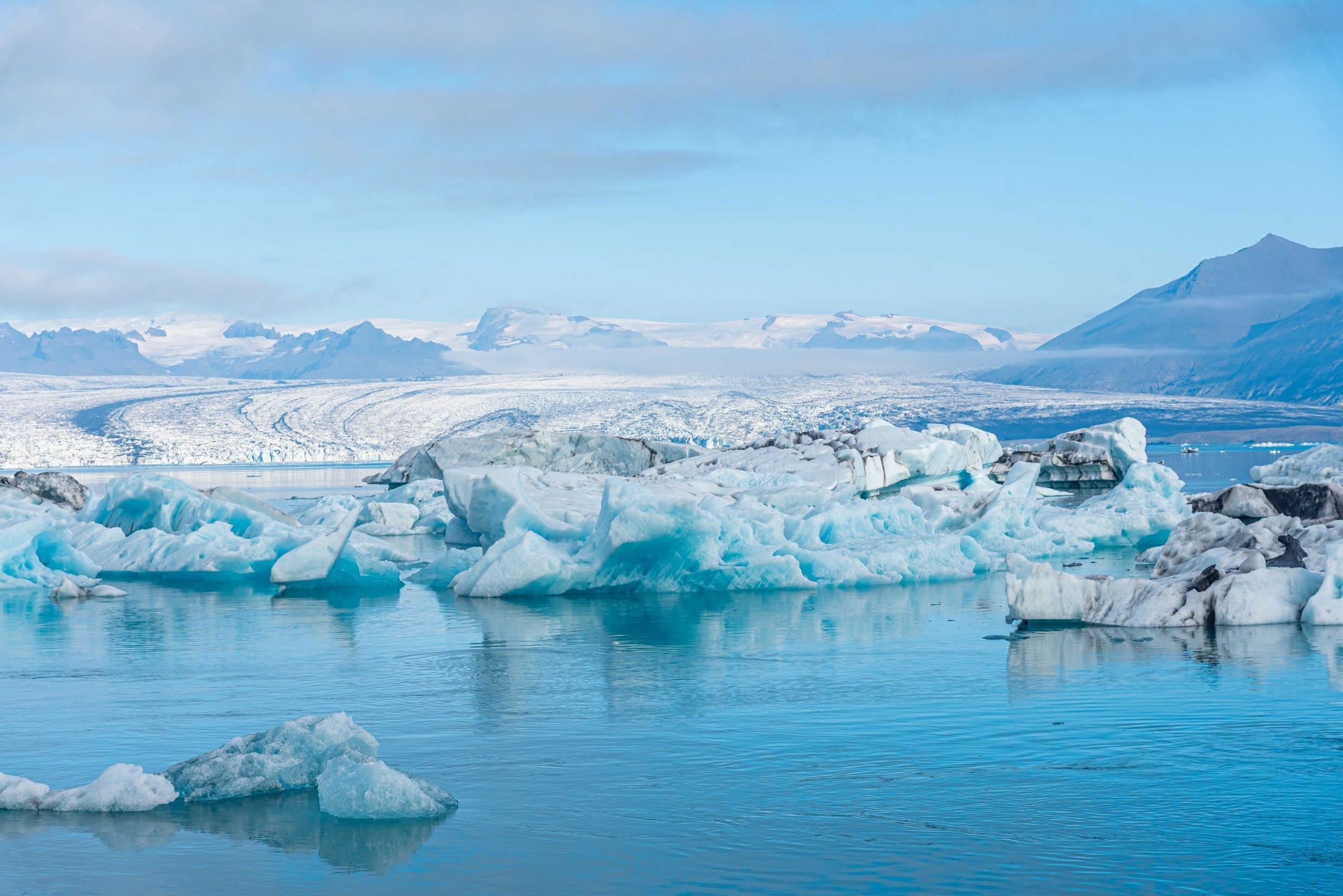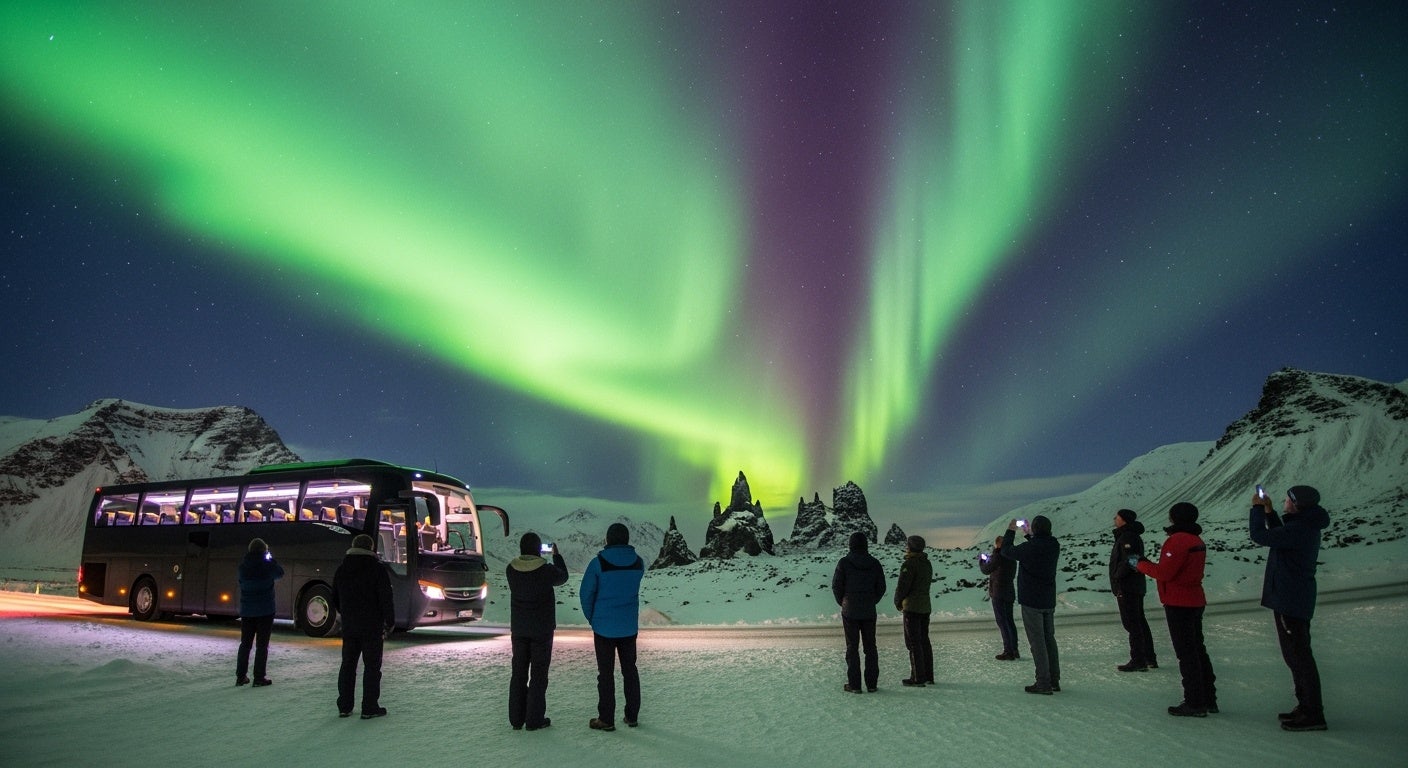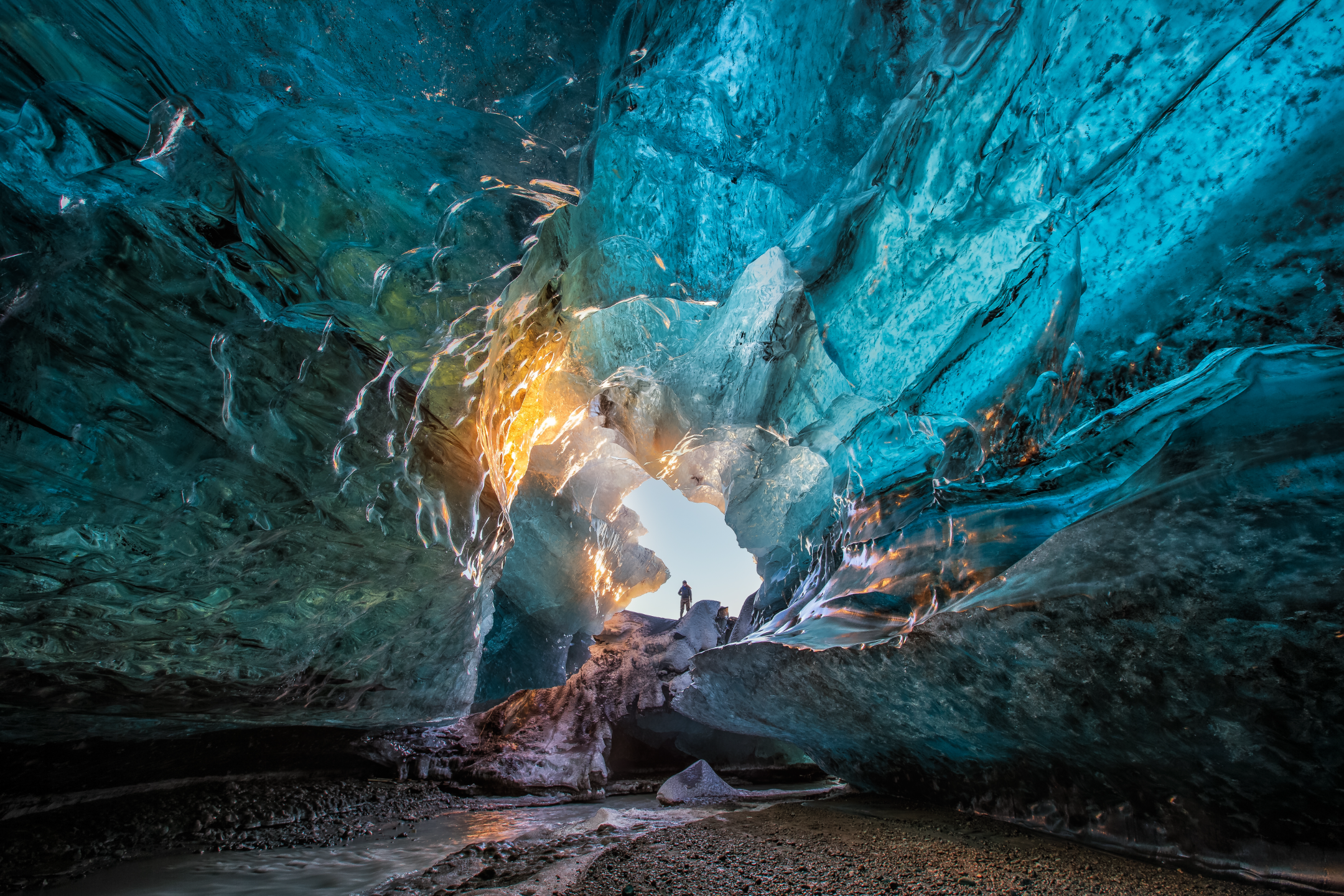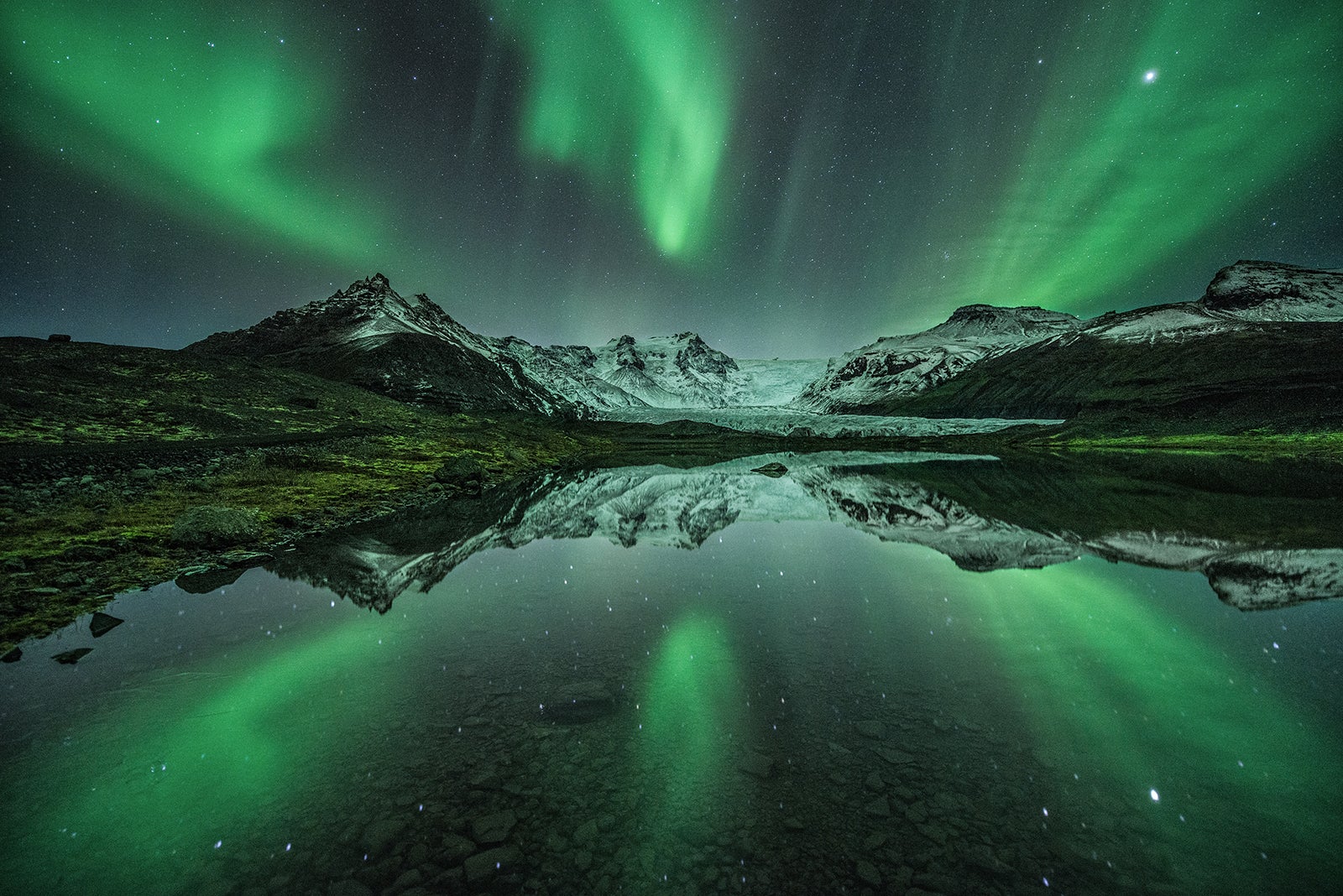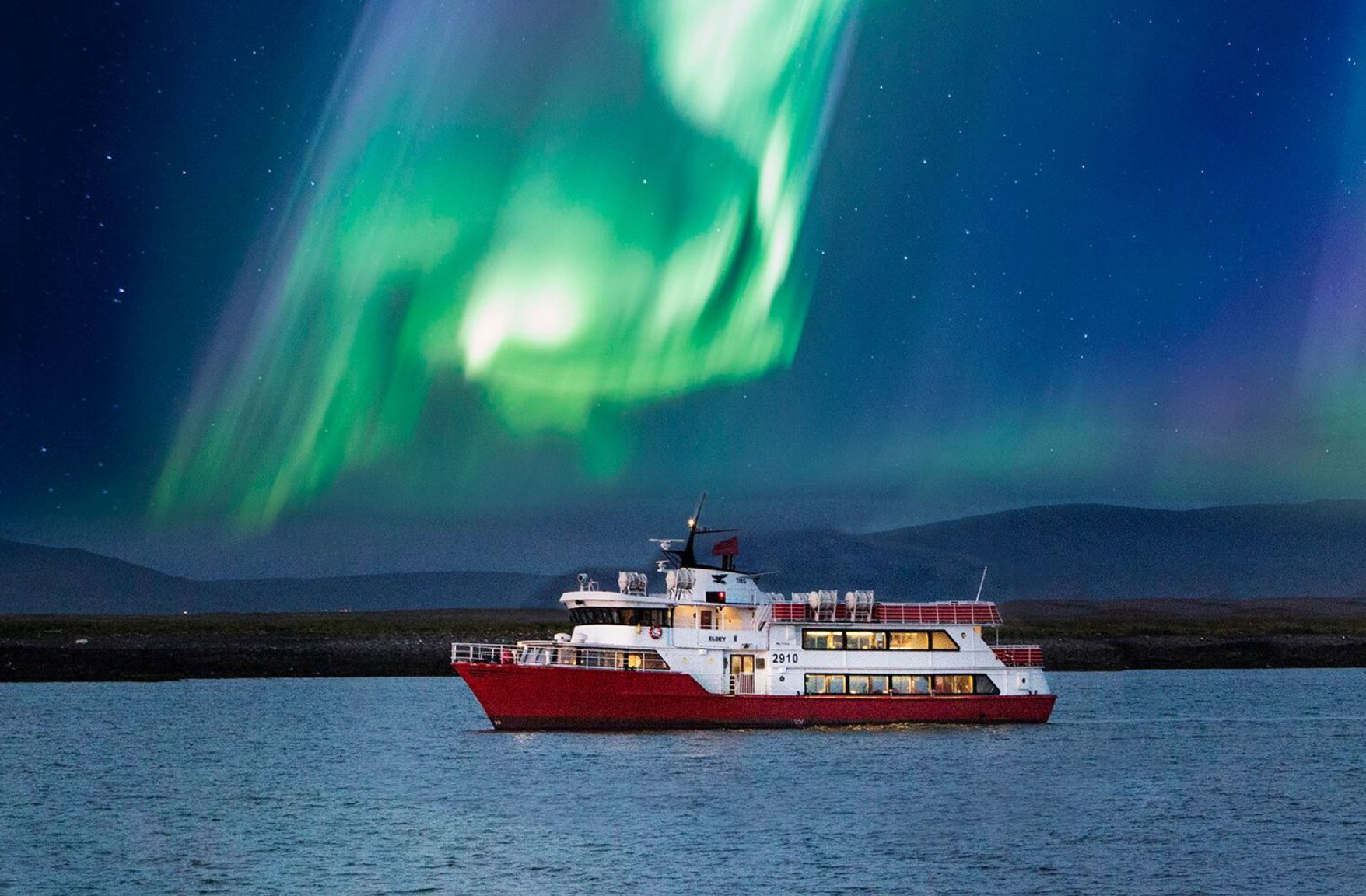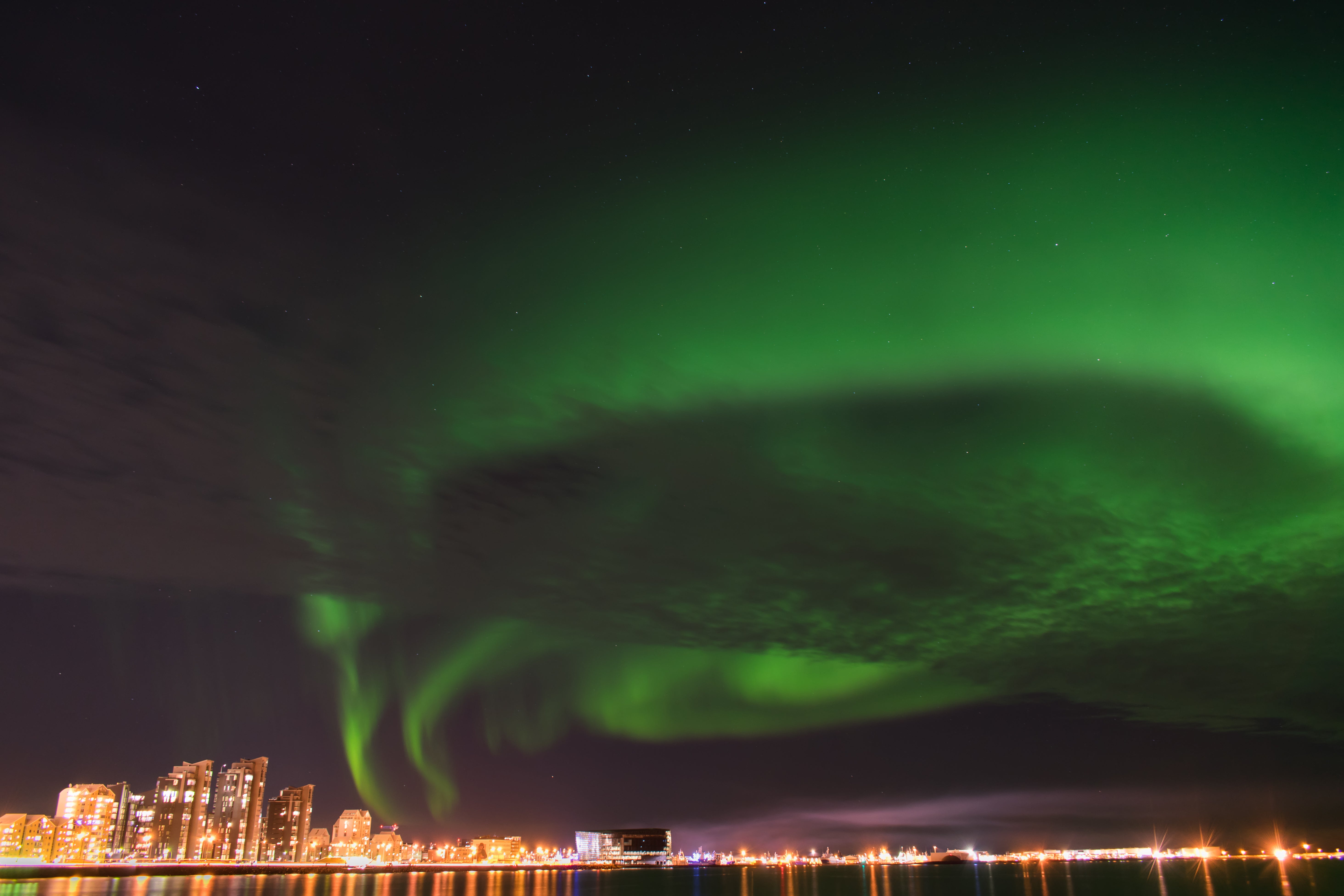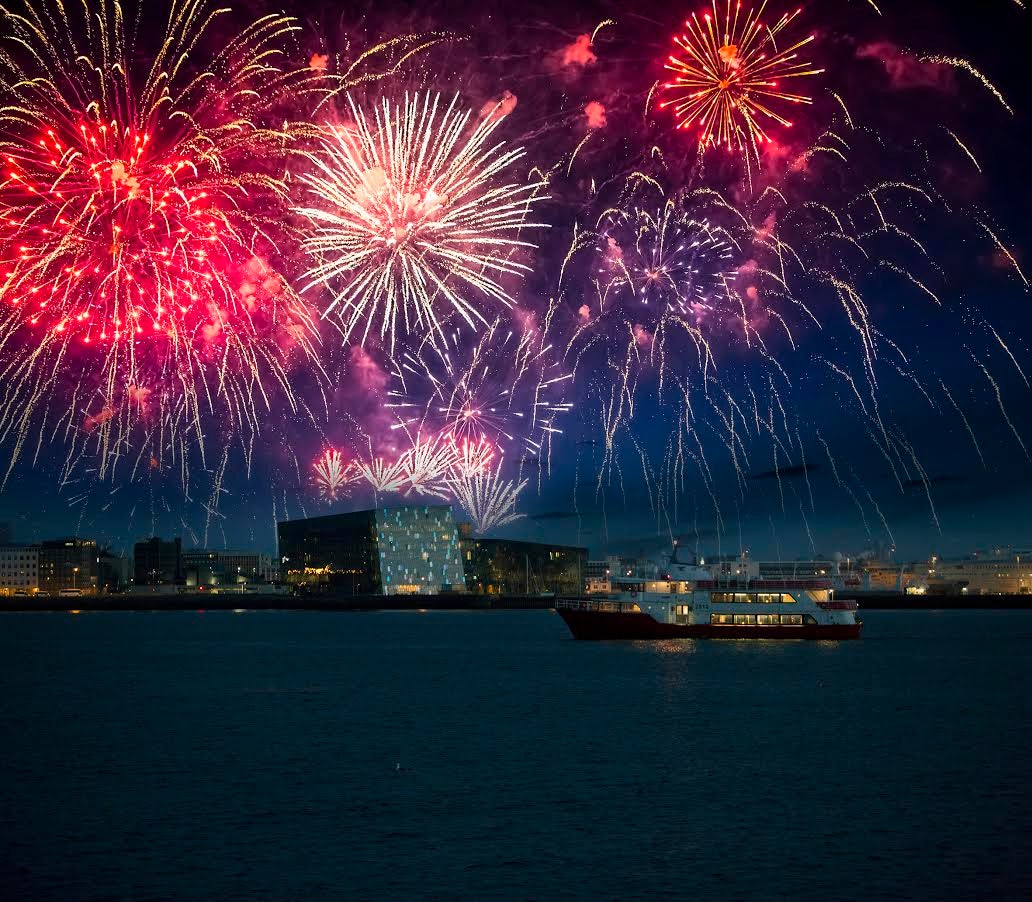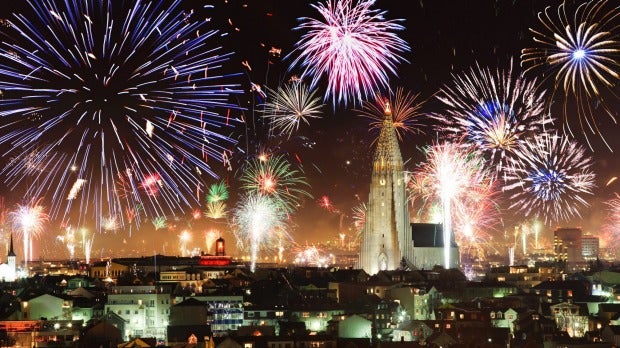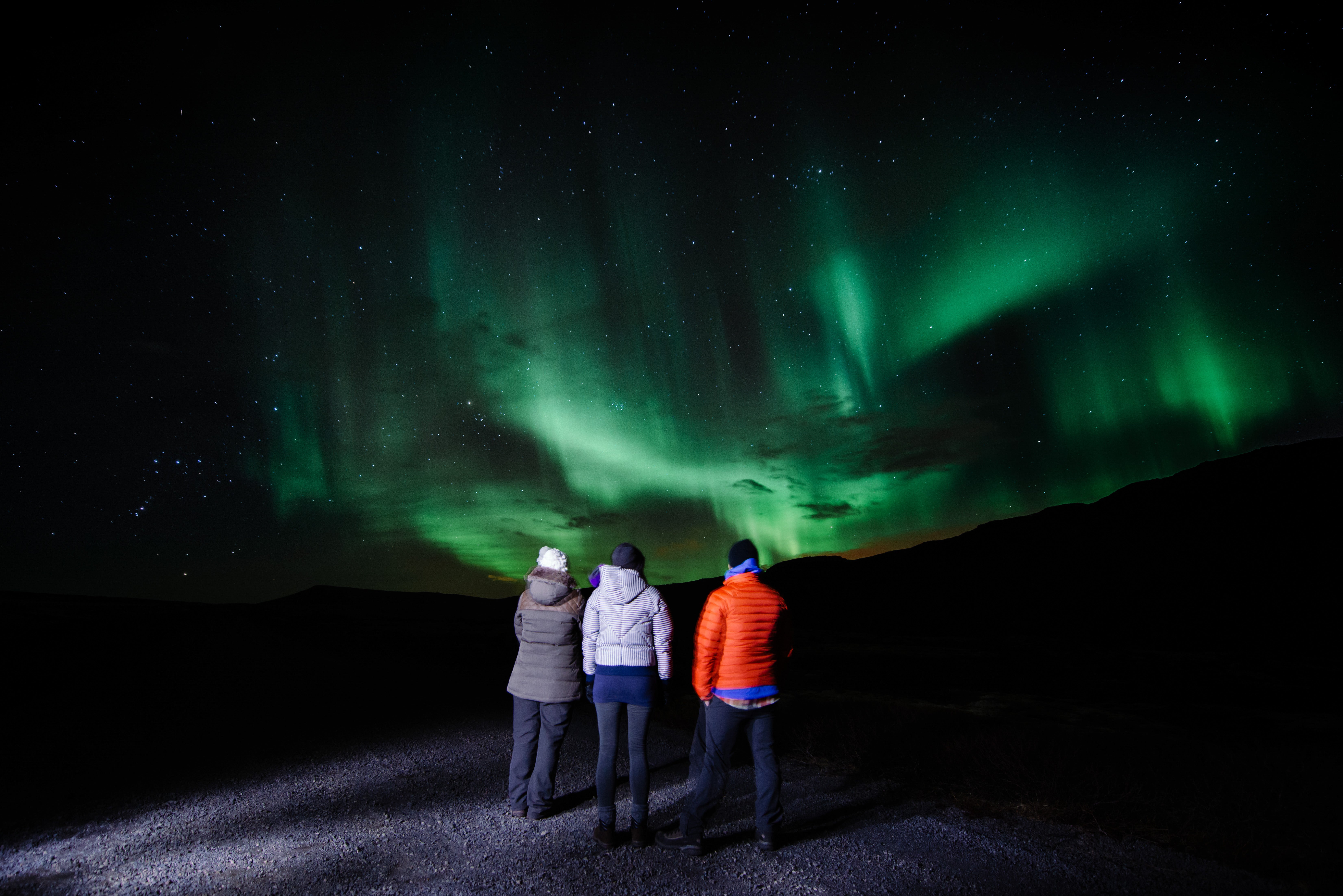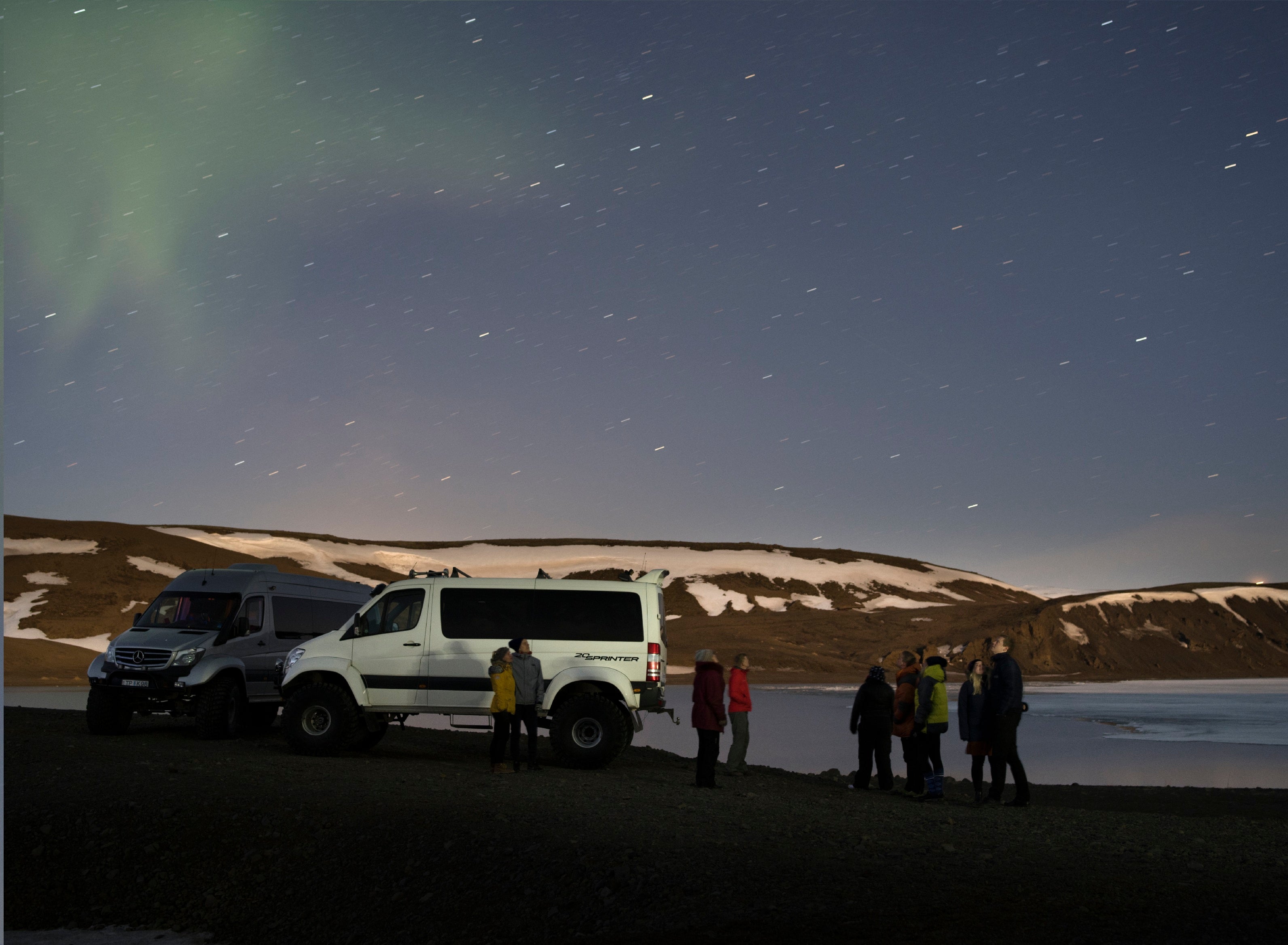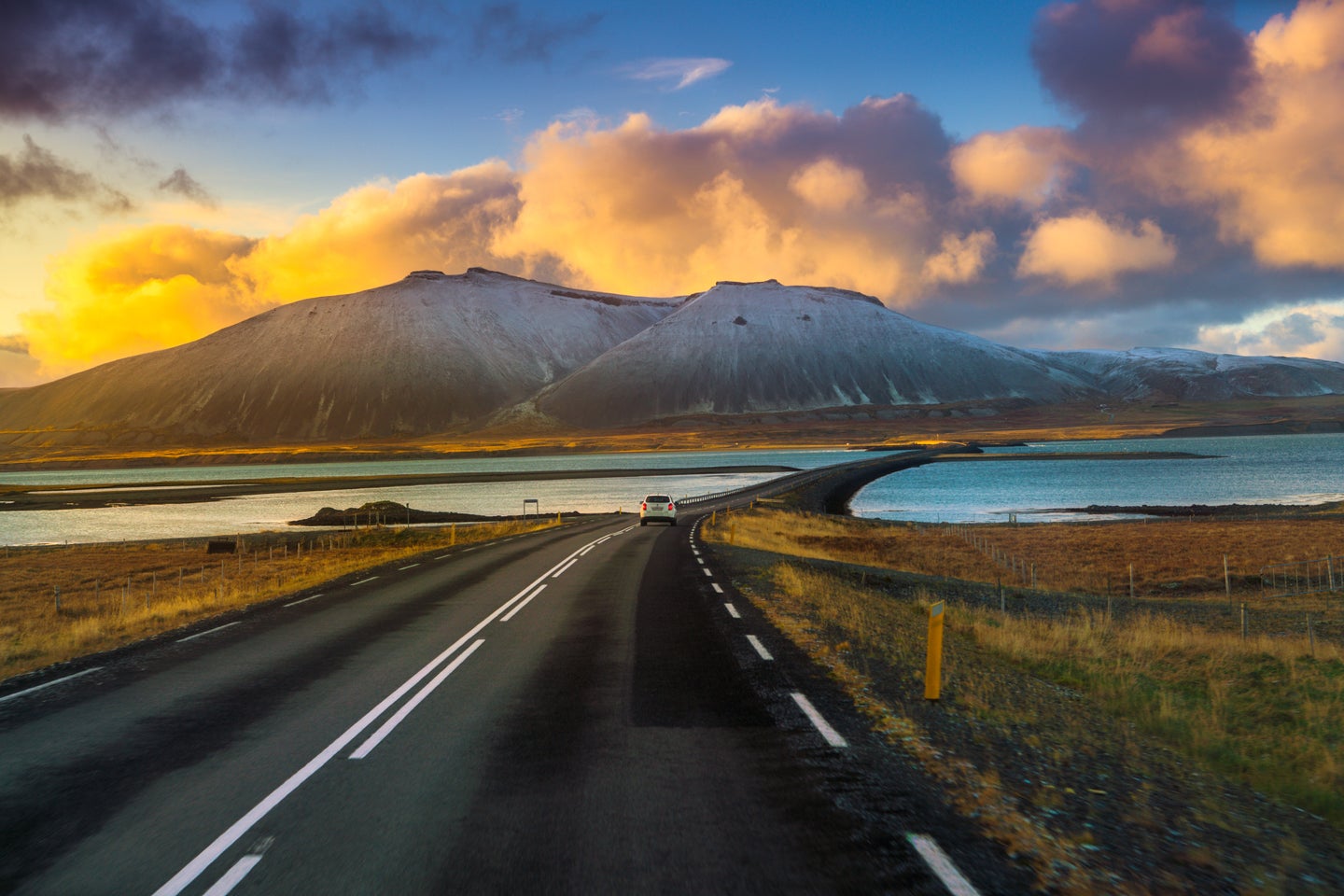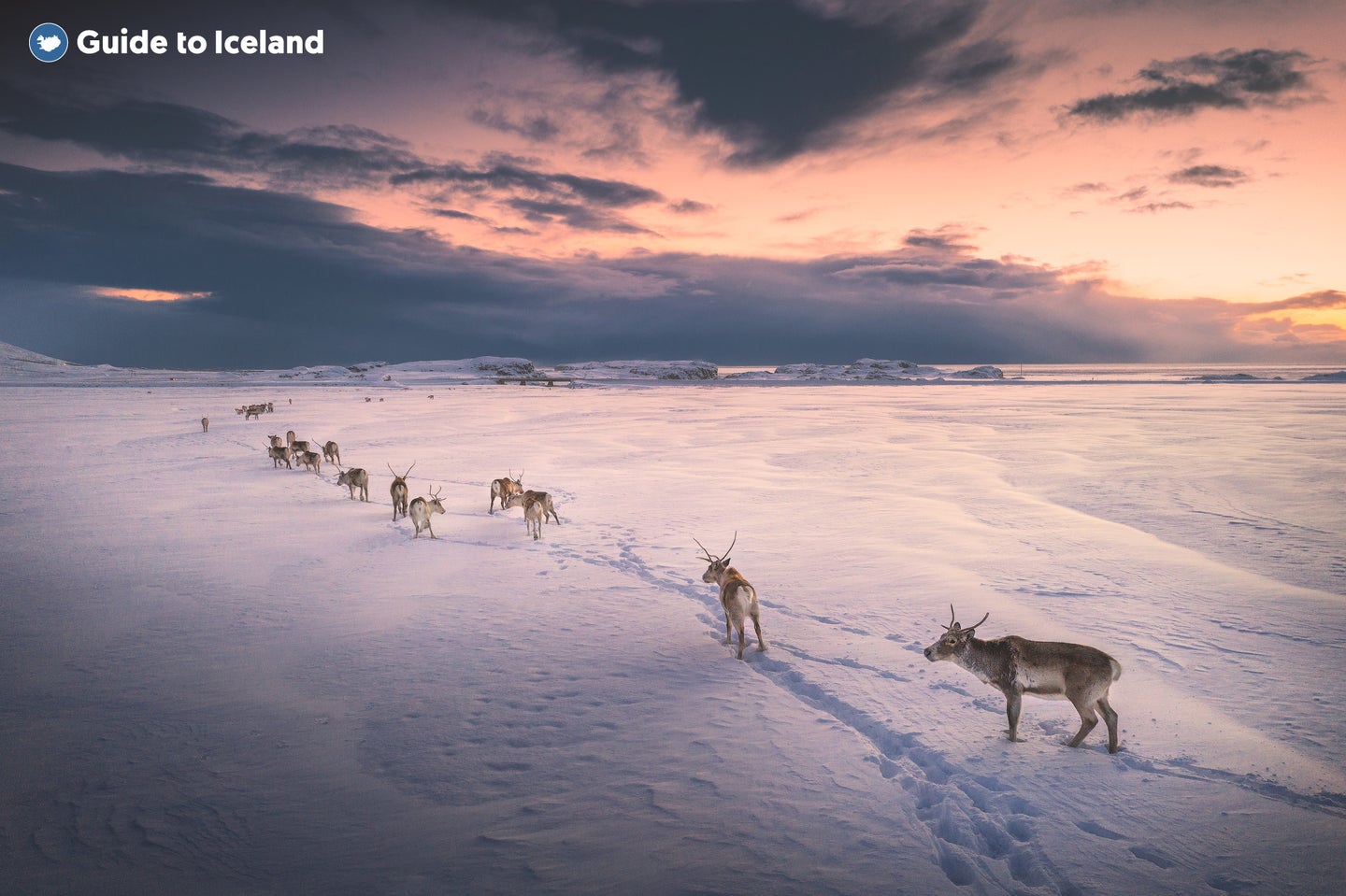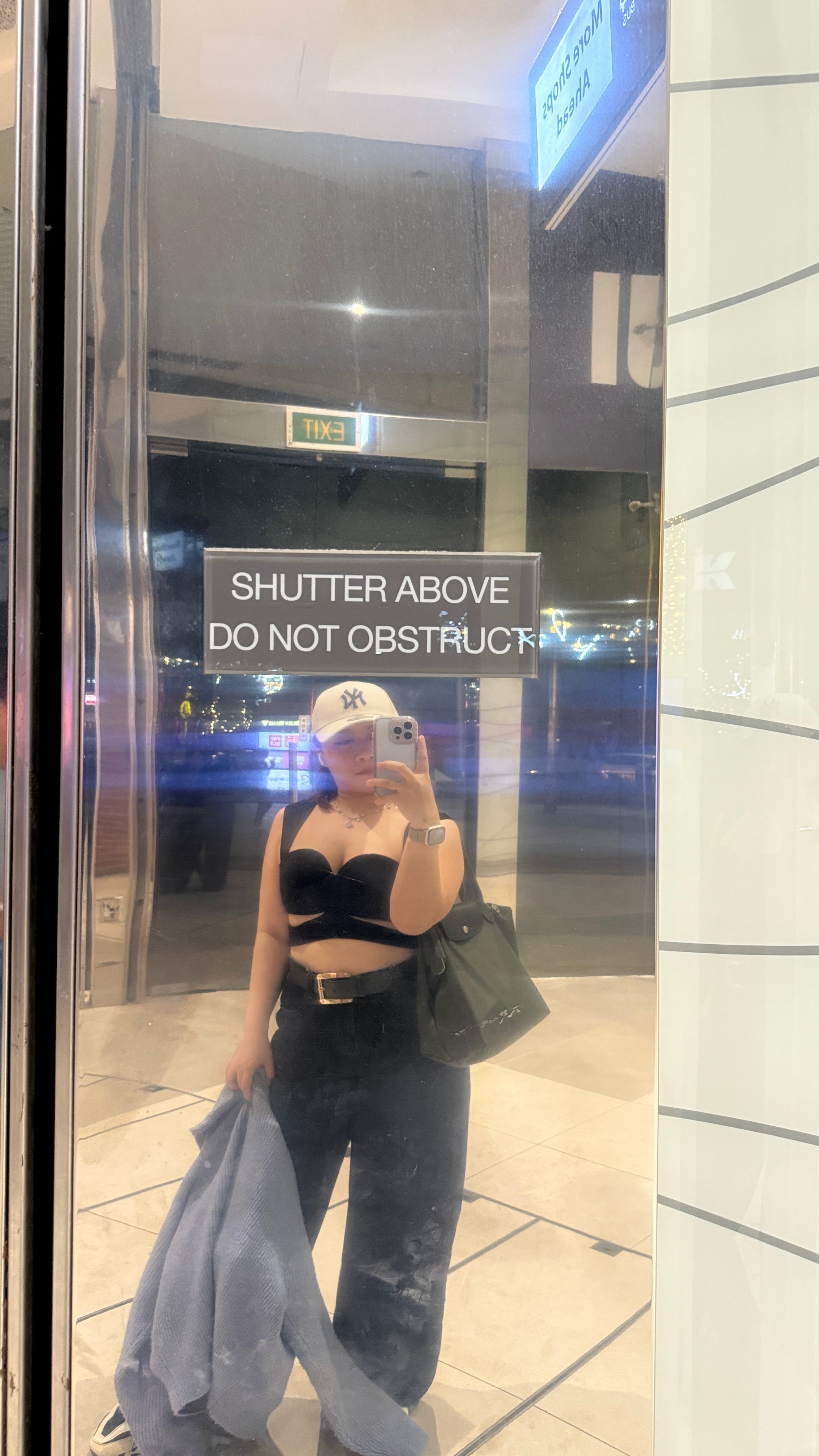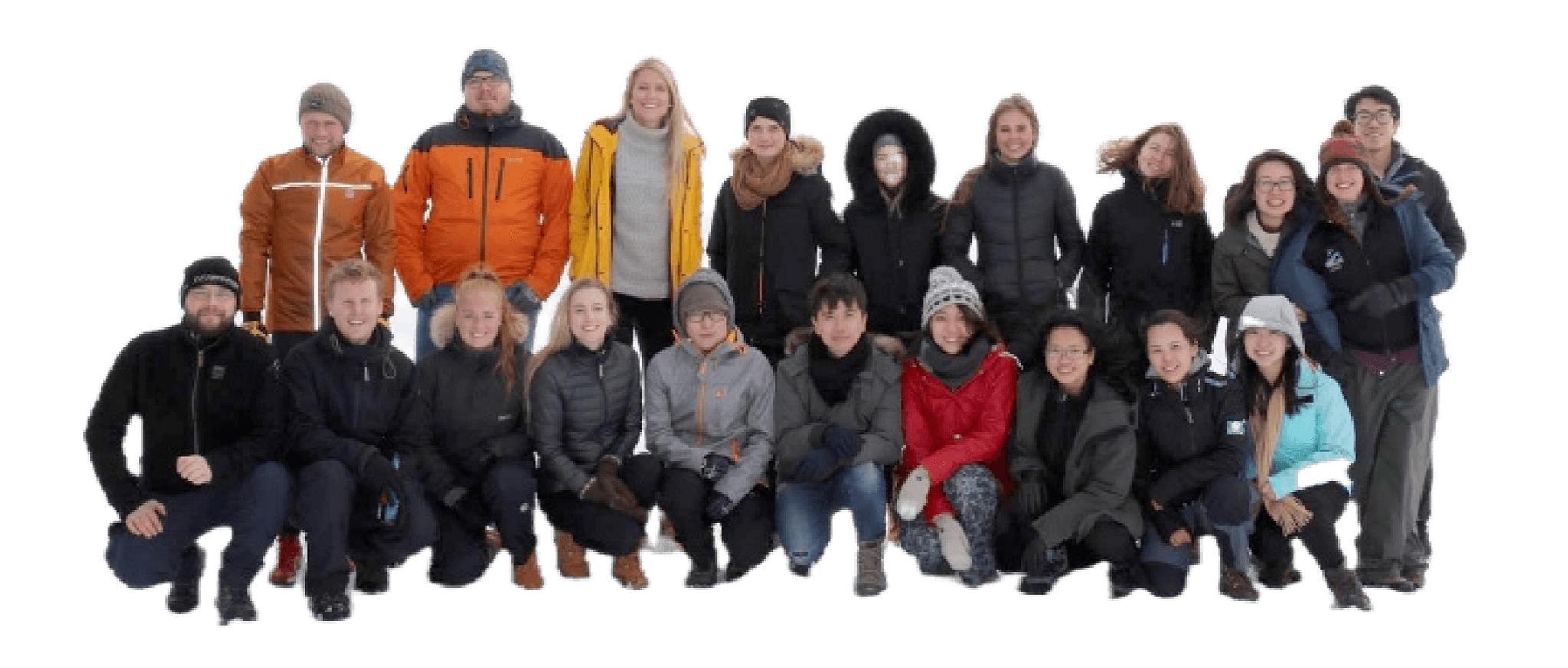The northern lights, or aurora borealis, are one of the most remarkable natural wonders. This phenomenon appears when charged particles from the sun collide with gases in the atmosphere, creating ribbons of green and pink. The dark winter nights and open landscapes make Iceland one of the best places in the world to see the northern lights.
The years 2025 and 2026 are especially promising for seeing the northern lights in Iceland. During this solar cycle and its maximum phase, the sun’s heightened activity can lead to brighter, more frequent aurora. These conditions give travelers in Iceland some of the best opportunities in recent years to witness the aurora borealis.
The Best Northern Lights Tours in Iceland
All northern lights tours in Iceland use real-time aurora and cloud forecasts to find the clearest skies each night. Guides adjust routes to maximize your chances of seeing the lights, something that’s difficult to do on your own.
Tour options range from budget-friendly bus trips to intimate small-group outings, private Super Jeep adventures, boat cruises from Reykjavik harbor, and multi-day tours that combine aurora hunting with sightseeing. Below, we highlight the best option in each category to help you choose the right tour for your trip.
Top 3 Best Northern Lights Bus Tours in Iceland
Bus tours are the most popular way to see the northern lights in Iceland. They’re affordable, include pickup in Reykjavik, and take you to dark-sky areas outside the city. Tours usually last 3–4 hours and include a guide who shares insights about the aurora.
-
The Northern Lights Tour from Reykjavik - A highly rated classic that brings you to the best viewing spots outside the capital.
-
Northern Lights Bus Tour from Reykjavik - The best-rated northern lights bus tour, with option to add a visit to the Aurora Museum.
-
Northern Lights Tour with an Audio Guide - A bus tour that offers commentary through an audio guide available in 10 languages.
Top 4 Best Small Group and Private Northern Lights Tours in Iceland
Small group tours take fewer travelers than standard bus tours, which makes the experience quieter and more flexible. Private tours go a step further, giving you full control over departure times and destinations.
-
Northern Lights Tour With Free Photos & Refreshments - A small-group minibus tour from Reykjavik that includes aurora photos and hot drinks.
-
Magical 4-Hour Northern Lights Minibus Tour - Travels to dark-sky locations with a guide who helps you capture the aurora, hot chocolate and snacks included.
-
5-Hour Northern Lights & Stargazing Tour with Pictures - Combines aurora hunting with telescope stargazing, plus photos and hot chocolate.
-
Private & Personalized 3-Hour Northern Lights Hunt - Witness the aurora in complete privacy with this personalized tour from Reykjavik.
Top 3 Best Northern Lights Super Jeep Tours in Iceland
Super Jeep tours use large 4x4 vehicles built for Iceland’s rough terrain, allowing guides to reach remote dark-sky areas that buses can’t access. These tours are a good choice if you want a more adventurous and exclusive northern lights experience.
-
The Northern Lights Super Jeep Tour with Free Photos - A 4x4 tour from Reykjavik to remote locations, with photos included.
-
4-Hour Northern Lights Super Jeep Tour - An evening tour where the guide helps you capture aurora photos, with snacks and hot drinks.
-
Comfortable 4-Hour Northern Lights Hunt in a Super Jeep - An aurora tour from Reykjavik, including photos, hot drinks, and snacks.
Top 3 Best Northern Lights Boat Tours in Iceland
Viewing the auroras from the sea offers a unique perspective. Boat tours typically depart from Reykjavik harbor and take you out onto Faxafloi bay away from city lights. The boats normally have indoor seating and outdoor viewing decks.
-
Magical 2-Hour Northern Lights Boat Cruise - Combines aurora hunting with views of Reykjavik’s coastline as you sail out into Faxafloi Bay.
-
Amazing 2-Hour Northern Lights Cruise - A classic evening departure that includes a warm drink on board while you wait for the lights to appear.
-
Comfortable 2 Hour Northern Lights Boat Tour - Uses a triple-deck vessel with panoramic platforms for unobstructed night-sky views.
Top 3 Best Multi-Day Northern Lights Tours in Iceland
Multi-day tours combine evening aurora hunts with daytime sightseeing around Iceland. They typically last 2–10 days, include accommodation and transport, and often feature activities such as ice caving, glacier hikes, and visits to waterfalls, hot springs, and glacier lagoons.
-
8-Day Guided Winter Northern Lights Tour of the Complete Ring Road - This top-rated tour brings you to all the best sights around the Ring Road, led by an expert guide. Enjoy top activities during day and hunt for the northern lights at night.
-
3-Day Northern Lights & Ice Cave Tour to the Golden Circle, South Coast - Let an experienced guide take you along the Golden Circle route and the South Coast, all the way to Jokulsarlon Glacier Lagoon. You'll also visit a bright blue ice cave!
-
2-Day Ice Cave & South Coast Trip to Jokulsarlon Glacier Lagoon - A professional guide will bring you to the main South Coast sights. This includes Jokulsarlon Glacier Lagoon, where you'll see an incredible ice cave in Vatnajokull Glacier.
Best Time To See the Northern Lights in Iceland
The best time to see the northern lights in Iceland is from mid-September to early April, when darkness returns and nights are long. Peak aurora viewing hours are generally from 9 PM to 2 AM, though the exact timing shifts with the seasons.
What many travelers don’t realize is that the aurora is actually active year-round and can appear at any time of day, as it’s a constant atmospheric phenomenon. In Iceland, you can only see it during the darker months, since from April through August, the bright summer nights and midnight sun make sightings impossible.
How To Spot the Northern Lights in Iceland
Going out to look for the northern lights in Iceland is easy. Follow these five easy steps to give yourself the best chance of seeing the aurora borealis during your trip:
-
Check the aurora forecast – you’ll need both solar activity and clear skies.
-
Charge your camera or phone – note that cold weather drains batteries faster.
-
Dress warmly – wear thermal layers, a hat, gloves, and sturdy boots.
-
Find a dark spot – join a tour, rent a car, or go on foot.
-
Be patient – the aurora can appear suddenly or after hours of waiting.
Understanding the Aurora Forecast in Iceland
If you’re traveling independently, you can use tools like the Icelandic northern lights forecast or Norwegian aurora forecast to see the estimated solar activity. Two key things to check are the Kp index and the cloud cover.
-
Kp index – This scale measures geomagnetic activity. A reading of 2 or higher means the aurora is active enough that it’s worth heading out, provided the skies are clear.
-
Cloud cover – The forecast map shows expected cloud conditions. Areas shaded in green indicate clouds, which will block your view of the aurora.
Learn more in our ultimate guide to the northern lights in Iceland.
Where To Go To See Northern Lights in Iceland
The northern lights can be seen anywhere in Iceland when conditions are right. Because the whole country sits under the auroral oval and has little light pollution, you don’t need to travel far to have a good chance. If you’re in the countryside, you’re in excellent conditions.
The northern lights are sometimes visible even from Reykjavik despite the glow of the city. Knowing the best places to see the northern lights in Reykjavik, such as Grotta lighthouse or Oskjuhlid Hill, can improve your chances on clear nights.
What to Know About Northern Lights Tours in Iceland
Seeing the northern lights is an incredible experience, but it’s important to remember they are a natural phenomenon that depends on solar activity and weather conditions. This means that sightings can never be guaranteed.
Many northern lights tours in Iceland offer a "free retry" policy, allowing you to join another tour at a later date if no auroras are visible during your first try. This is why we highly recommend taking northern lights tours early during a trip to Iceland, as this gives you the option to try again on a different night if needed.
Patience and flexibility are key when hunting for the aurora. You'll usually have to wait for the lights to appear, so it’s important to dress warmly with layers, hats, gloves, wool socks, and sturdy shoes. Some tours also provide hot drinks like tea or hot chocolate to keep you comfortable while you wait!
With preparation and a bit of luck, hunting for the northern lights in Iceland can be an unforgettable adventure. This natural phenomenon has amazed humans for centuries, and with the right conditions, you can see the aurora dancing in the sky.


